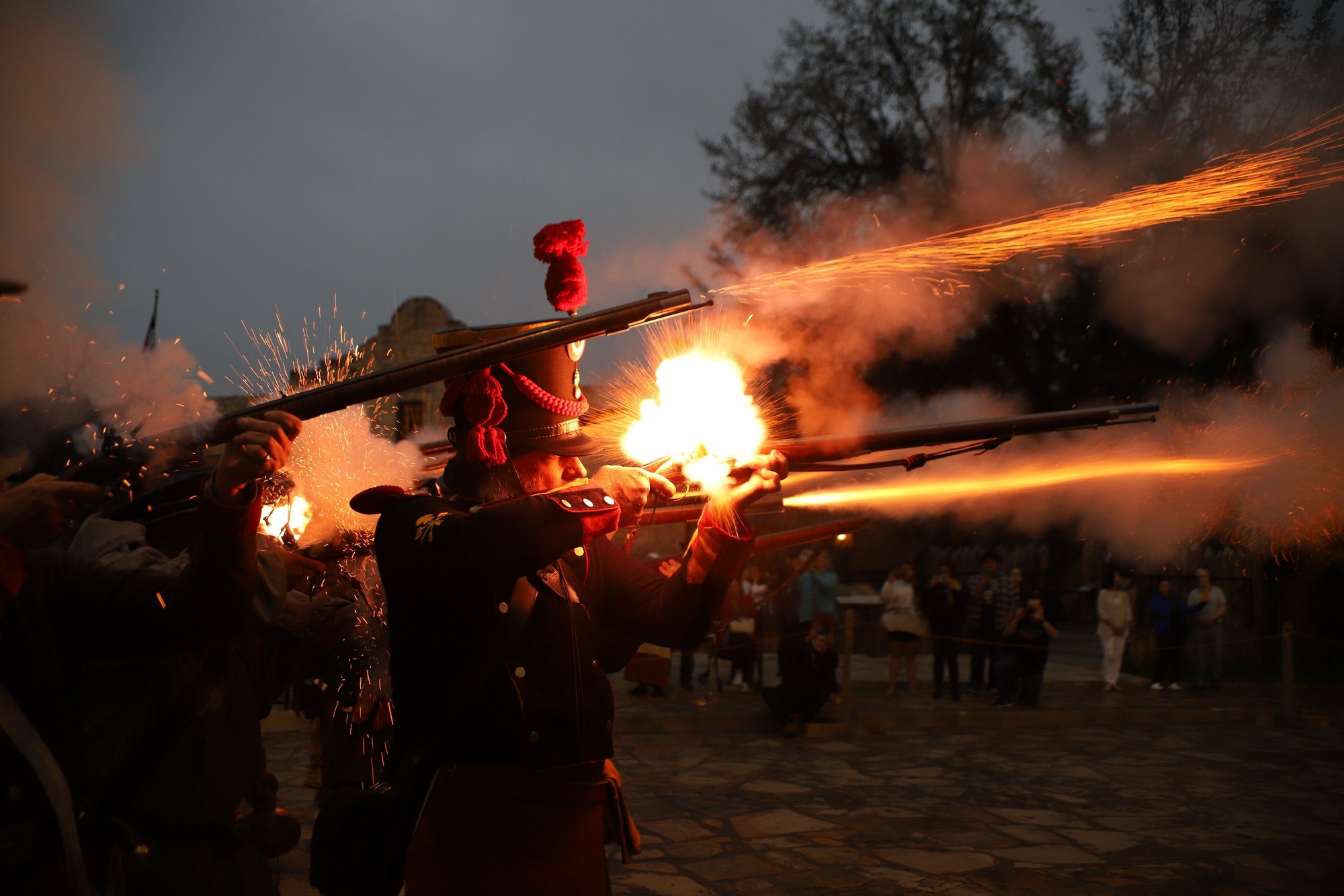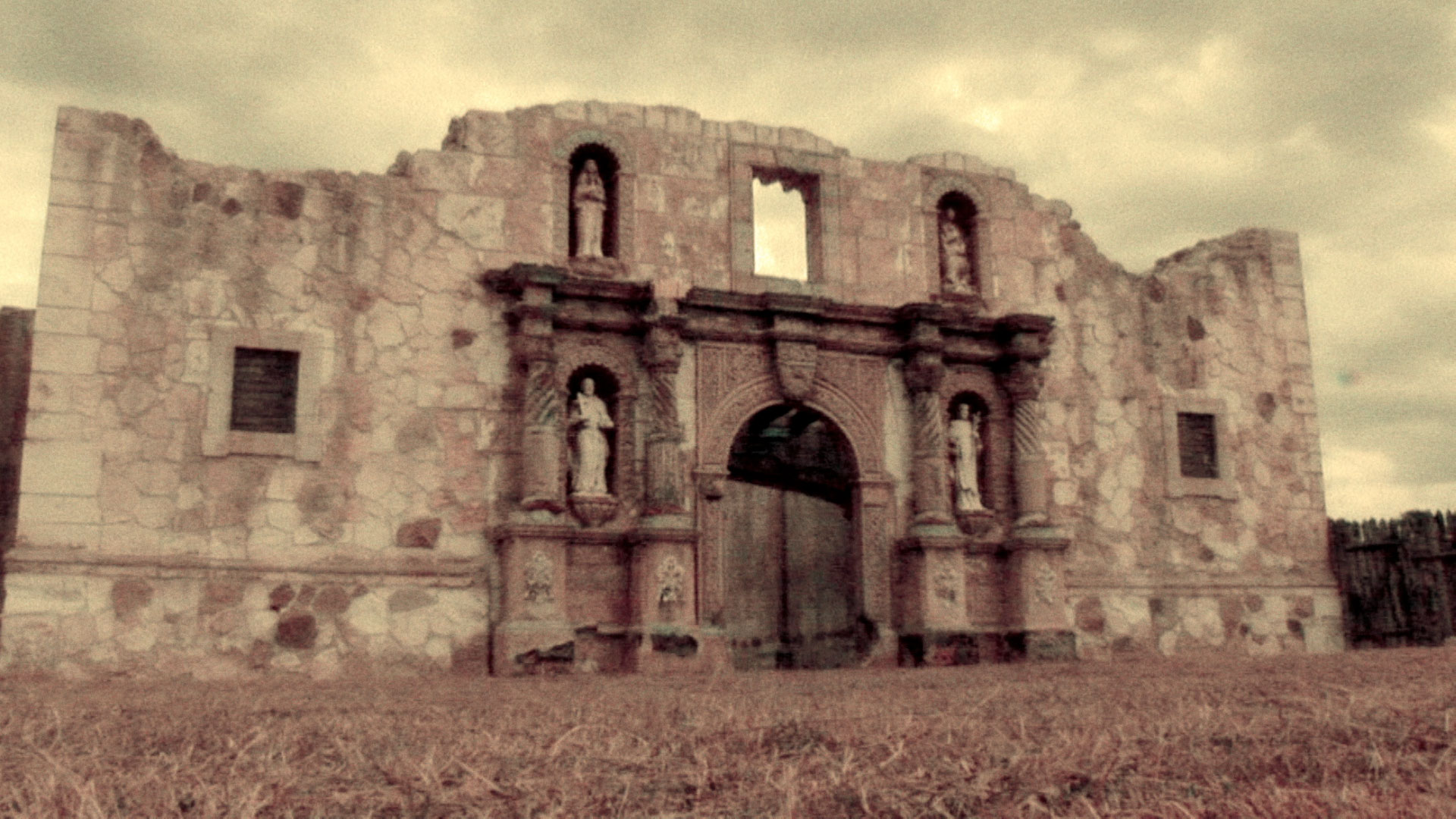Pictures Of The Alamo Before The Battle: A Journey Through History
Ever wondered what the Alamo looked like before it became a symbol of Texan resistance and courage? Well, buckle up because we're about to dive deep into this historical journey. Pictures of the Alamo before the battle are not just photographs; they're windows into a pivotal moment in history. Join me as we explore the untold stories captured in these images, and uncover the rich tapestry of events that led to the infamous battle. So, let's get started, shall we?
History has a way of sneaking up on us. We often think of historical landmarks like the Alamo as static places frozen in time, but they were once bustling hubs of life. The Alamo, before the battle, was a mission, a community, and a fortress. These pictures give us a glimpse into the everyday lives of the people who lived there, offering a perspective that’s both intimate and monumental.
Now, if you're anything like me, you might be thinking, "Why does this matter?" Well, understanding the Alamo before the battle isn't just about appreciating old photos. It's about connecting with the past in a way that makes history feel alive. So, grab your virtual time machine, and let's embark on this fascinating journey through history.
- 5movierulz Kannada Movie 2022 Your Ultimate Guide To The Blockbuster Sensation
- 5movierulz 2024 Download Telugu Hanuman Ndash Your Ultimate Movie Hub
Why Are Pictures of the Alamo Before the Battle Important?
Let's face it, history books can sometimes feel like a snooze fest, but pictures? Now those are a different story. The images of the Alamo before the battle serve as vital historical artifacts. They give us a real, tangible connection to the past, helping us visualize what life was like in the early 19th century. These pictures aren’t just random snapshots; they’re pieces of a puzzle that help historians piece together the events leading up to the battle.
Moreover, these photos offer a fresh perspective on the people who lived there. They weren’t just characters in a history book; they were real people with real lives. By examining these images, we can better understand their culture, lifestyle, and the challenges they faced. It’s like looking through a portal into another time, and that’s pretty darn cool if you ask me.
How These Pictures Influence Modern Understanding
Fast forward to today, and these pictures of the Alamo before the battle continue to shape our understanding of this iconic event. They’ve influenced everything from historical reenactments to blockbuster movies. Think about it, every time you see a movie or read a book about the Alamo, those images are likely influencing the portrayal of characters and settings.
But it’s not just about entertainment. These pictures also play a crucial role in education. Teachers use them to bring history to life, making it more engaging and relatable for students. They help bridge the gap between the past and the present, making history feel less like a distant memory and more like a living, breathing story.
The Alamo: A Brief History
Before we dive into the pictures, let’s take a moment to understand the Alamo itself. Originally known as Mission San Antonio de Valero, the Alamo was established in 1718 as a Catholic mission. Over the years, it served various purposes, from a religious hub to a military outpost. It wasn’t until 1836 that it became the site of the famous Battle of the Alamo, a pivotal moment in the Texas Revolution.
But what about the Alamo before the battle? Back then, it was a thriving community. The mission housed not only religious activities but also served as a hub for trade and agriculture. It was a melting pot of cultures, where Spanish, Native American, and Mexican influences blended together. This rich tapestry of life is what makes the Alamo such a fascinating subject of study.
The People Who Lived at the Alamo
Life at the Alamo wasn’t all about battles and sieges. The people who lived there had their own stories to tell. They were farmers, artisans, and missionaries, each contributing to the community in their own way. The Native American tribes who lived nearby also played a significant role in the Alamo’s history, often trading goods and sharing knowledge with the settlers.
These interactions created a unique cultural blend that’s still evident in the architecture and artifacts found at the site. By studying the pictures of the Alamo before the battle, we can gain insights into the daily lives of these people, from the clothes they wore to the tools they used.
Pictures of the Alamo Before the Battle: What Do They Show?
Now, let’s talk about the pictures themselves. What do they show? For starters, they depict the Alamo in its full glory, before the scars of battle left their mark. You’ll see the mission’s impressive architecture, the lush gardens, and the vibrant community that thrived within its walls. These images paint a picture of a place that was both beautiful and bustling.
Some of the most striking images show the mission’s church, with its iconic façade and intricate details. Others capture the daily life of the inhabitants, from children playing in the courtyard to artisans crafting tools and pottery. These photos are not just visual records; they’re stories waiting to be told.
Exploring the Architecture
One of the most fascinating aspects of the pictures is the architecture. The Alamo’s design reflects the blending of Spanish and Native American influences. The use of local materials, such as limestone and adobe, speaks to the resourcefulness of the builders. The intricate carvings and decorations on the church’s façade tell stories of faith and culture.
These architectural details aren’t just aesthetically pleasing; they also serve a practical purpose. The thick walls provided insulation against the harsh Texas climate, while the layout of the mission facilitated community life. By examining these pictures, we can appreciate the ingenuity and craftsmanship that went into building the Alamo.
What Can We Learn from These Pictures?
Beyond their visual appeal, these pictures offer valuable lessons. They teach us about the importance of preserving history and the power of visual storytelling. They remind us that history isn’t just about dates and events; it’s about the people who lived it and the stories they left behind.
Moreover, these images encourage us to think critically about the past. They challenge us to question our assumptions and seek a deeper understanding of the events that shaped our world. By studying the pictures of the Alamo before the battle, we can gain a more nuanced perspective on history and its impact on our lives today.
Lessons in Cultural Exchange
One of the most significant lessons from these pictures is the importance of cultural exchange. The Alamo wasn’t just a place of conflict; it was also a place of collaboration. The interactions between different cultures at the mission highlight the potential for cooperation and understanding, even in the face of adversity.
These lessons are just as relevant today as they were in the 19th century. In a world that’s becoming increasingly interconnected, understanding and appreciating cultural differences is more important than ever. The pictures of the Alamo before the battle remind us of the power of dialogue and the importance of learning from one another.
How to Preserve These Historical Images
Preserving historical images is crucial for maintaining our connection to the past. But how do we do it? First, it’s important to store these images in a safe, controlled environment. This means protecting them from light, humidity, and other environmental factors that can cause damage. Digitizing these images is another effective way to preserve them, ensuring that future generations can access and study them.
Additionally, institutions like museums and archives play a vital role in preserving historical images. They not only store these images but also make them available to researchers and the public. By supporting these institutions, we can help ensure that the stories captured in these pictures continue to be told.
The Role of Technology
Technology has revolutionized the way we preserve and study historical images. Advances in digital imaging and storage have made it easier than ever to capture and share these pictures with the world. High-resolution scans allow researchers to examine details that might otherwise go unnoticed, while online databases make these images accessible to anyone with an internet connection.
But technology isn’t just about preservation; it’s also about innovation. Augmented reality and virtual reality technologies are being used to recreate historical sites, allowing people to experience them in a way that’s both immersive and educational. These advancements are helping to bring history to life in ways that were once unimaginable.
Conclusion: Why These Pictures Matter
So, there you have it, folks. Pictures of the Alamo before the battle are more than just old photographs; they’re portals to the past. They give us a glimpse into the lives of the people who lived there, the culture they created, and the events that shaped their world. By studying these images, we can gain a deeper understanding of history and its impact on our lives today.
I encourage you to take a moment to reflect on what you’ve learned. Think about the stories these pictures tell and the lessons they offer. And if you’ve enjoyed this journey through history, why not share it with others? Spread the word, leave a comment, or check out more articles on our site. Together, we can keep the stories of the past alive and relevant for generations to come.
Table of Contents
- Pictures of the Alamo Before the Battle: A Journey Through History
- Why Are Pictures of the Alamo Before the Battle Important?
- How These Pictures Influence Modern Understanding
- The Alamo: A Brief History
- The People Who Lived at the Alamo
- Pictures of the Alamo Before the Battle: What Do They Show?
- Exploring the Architecture
- What Can We Learn from These Pictures?
- Lessons in Cultural Exchange
- How to Preserve These Historical Images
- The Role of Technology
- Conclusion: Why These Pictures Matter
Article Recommendations
- How To Viralkand Your Content And Make It Trend Worldwide
- Subhashree Sahu Terabox Link The Ultimate Guide To Downloading And Exploring



Detail Author:
- Name : Lura Waelchi
- Username : rebekah62
- Email : bruen.diana@yahoo.com
- Birthdate : 1981-08-06
- Address : 3078 Schinner Pike Estrellafurt, AL 86697
- Phone : 703.906.1833
- Company : Bode PLC
- Job : Irradiated-Fuel Handler
- Bio : Ut omnis maxime illum error. Et dolor dolores maxime. Et ut autem molestias dolorum ut.
Socials
facebook:
- url : https://facebook.com/larissawalter
- username : larissawalter
- bio : Delectus non accusamus soluta nesciunt iusto nostrum.
- followers : 486
- following : 758
twitter:
- url : https://twitter.com/larissa_id
- username : larissa_id
- bio : Blanditiis deleniti illo corporis sit illo dignissimos. Molestiae qui qui deserunt et sequi molestiae. Facere molestiae consequatur dolorem.
- followers : 1643
- following : 2399